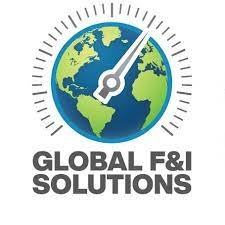
Auto Lender Fraud: A Growing Concern for Dealerships
The automotive finance industry is facing unprecedented challenges as fraud losses skyrocket. According to a comprehensive report by Point Predictive, auto lenders are projected to face an alarming $9.2 billion in fraud loss exposure for the year 2024. This represents a remarkable 16.5 percent increase from the previous year, underscoring the urgency for dealerships and auto lenders to enhance their fraud prevention strategies.
Understanding the Fraud Landscape
In analyzing over 250 million historical applications and $4 trillion in submitted loans, Point Predictive identified that first-party fraud accounts for a staggering 69% of the total fraud risk in auto lending. This category primarily includes income and employment misrepresentation, along with synthetic identity theft. The consequences of these fraudulent practices can be severe, creating financial strain on lenders and complicating the loan approval process for honest borrowers.
Why First Party Fraud is a Growing Threat
First-party fraud, where borrowers utilize their own identities to misrepresent crucial information, remains a core issue. Notably, income and employment fraud alone accounted for nearly $3.9 billion of the fraud risk, while synthetic identities contributed approximately $2.5 billion. As these fraudulent tactics grow more sophisticated, understanding their nuances can help dealerships recognize and mitigate these risks.
The Rise of Synthetic Identity Fraud
Synthetic identity fraud, a tactic characterized by the creation of fake identities using a combination of real and fabricated information, has seen an alarming increase. Data from Point Predictive's Synthetic Identity Risk Index indicates a staggering 500% spike in cases since 2017. Dealerships must enhance training and employ advanced fraud detection systems to combat this evolving threat.
Implications for Auto Lenders and Dealerships
The increasing prevalence of such fraud techniques highlights the need for robust verification processes. Dealerships are advised to adopt technologies that can assess authenticity accurately, thereby protecting themselves and their customers. Failing to act could lead to significant financial losses, damaged reputations, and legal repercussions.
Moving Forward: Strategies to Combat Auto Fraud
As the landscape of auto lending fraud evolves, dealerships must implement preventive measures that encompass technology, training, and meticulous loan processing. Encouraging training programs that focus on identifying fraudulent applications can empower staff to swiftly flag suspicious activities.
Conclusion: Taking Action Against Auto Fraud
The stark reality of rising fraud exposures in the auto lending sector raises pressing concerns for dealership principals and GMs alike. By staying informed about current trends and implementing strategic improvements to anti-fraud measures, dealerships can protect their operations and their customers effectively. A proactive approach is essential to thrive in today's marketplace while combating fraud effectively and ensuring sustainable business practices.
 Add Row
Add Row  Add
Add 




Write A Comment